Radxa ROCK5 Model B (aka ROCK 5B) is one of the most anticipated Rockchip RK3588 single board computers due to its features set and relatively affordable price. It was first showcased in January, but it’s taking a while as the Cortex-A76/A55 SoC is a complex beast. The good news is that the public launch is getting closer as Radxa sent “developer edition” samples to developers and enthusiasts for a “debug party”. I was one of the recipients so, in this post, I’ll have a closer look at the latest revision of the board, and give it a quick try first before going into more details in the second of this preview.
ROCK5 Model B unboxing
I received the 16GB RAM version which should be the same for all board part of the “developer edition batch.
Developers are invited to submit reports to Radxa forums, and since those are public, anybody can have a look at the current state of affairs.
I also got a 16GB eMMC module (FORESEE) with my board.
The design has changed a little bit with the HDMI IN connector moved to the front panel, MIPI DSI and CSI connected moved to the side edge of the PCB, and heatsink mounting holes dimensions changed to “north bridge” dimensions.
Besides the micro HDMI input ports, the front panel comes with the power and recovery keys, and a color-coded 40-pin GPIO header. As one would expect, Rockchip RK3588 should get pretty hot under load, so a 5V fan + heatsink has been fitted on top of the CPU.
The rear panel comes with a 3.5mm audio jack, a USB 3.0 Type-C port with Display Alt mode also used to power the board, two 8K-capable HDMI 2.1 ports, two USB 2.0 ports, two USB 3.0 ports, and a 2.5GbE port.
My board is also equipped with an Fn-Link 6252M-PUB WiFi 6 and Bluetooth 5.2 module powered by a Realtek RTL8852BE chip that’s not listed on the Realtek website just yet but is supposed to be an AX1800 chip with support for up to 1148 Mbps link when using 802.11ax. Something to test using the Xiaomi AX6000 and TPLink 2.5GbE donated by Radxa earlier this year.
The bottom side of the board comes with an M.2 Key-M socket for NVMe SSD, MIPI DSI LCD and MIPI CSI camera connectors, as well as an eMMC socket.
Talking about the eMMC socket, let’s install the 16GB module I’ve received. A Raspberry Pi 4 SBC is shown for scale. While Rockchip RK3588 is not the most powerful system I used, it will be “desktop-class”, and in terms of interfaces, ROCK 5B may well be the most featured board or computer I’ve ever owned with 2.5GbE, WiFi 6, 8K video output, 4K video input, support for PCIe Gen3 x4 storage, etc… That’s quite impressive for a board that should sell for just under $200.
ROCK 5B first boot to… Debian 11
Let’s connect a USB keyboard and mouse, an Ethernet cable, an HDMI display, and a USB-PD power supply (the one that came with Khadas VIM4).
I waited for a while, and all I got was a black screen with the message “no signal” from time to time… As you can see I connect the HDMI port next to the USB-C power port. So I tried the other HDMI port closer to the USB ports…
And success! It’s called a “debug party” for a reason, and several features ought not to work or it would be no fun. I could login with “rock” password, but finally connected through SSH since it’s easier for the review.
Let’s check some system information:
|
1 2 3 4 5 6 7 8 9 10 11 12 13 14 15 16 17 18 19 20 21 22 23 24 25 26 27 28 29 30 31 32 33 34 35 36 37 38 39 40 41 42 43 44 45 46 47 48 49 50 51 52 53 54 55 56 57 58 59 60 61 62 63 64 65 66 67 68 69 70 71 72 73 74 75 76 77 78 79 80 81 |
rock@rock-5b:~$ uname -a Linux rock-5b 5.10.66-10-rockchip-gc5e33d713633 #rockchip SMP Fri Jun 24 11:59:02 CST 2022 aarch64 GNU/Linux rock@rock-5b:~$ cat /etc/issue Debian GNU/Linux 11 \n \l rock@rock-5b:~$ free -m total used free shared buff/cache available Mem: 15723 964 13790 39 968 14562 Swap: 0 0 0 rock@rock-5b:~$ df -h Filesystem Size Used Avail Use% Mounted on /dev/root 14G 4.3G 8.9G 33% / devtmpfs 7.6G 0 7.6G 0% /dev tmpfs 7.7G 0 7.7G 0% /dev/shm tmpfs 3.1G 19M 3.1G 1% /run tmpfs 5.0M 4.0K 5.0M 1% /run/lock tmpfs 1.6G 108K 1.6G 1% /run/user/1001 rock@rock-5b:~$ sudo inxi -Fc0 perl: warning: Setting locale failed. perl: warning: Please check that your locale settings: LANGUAGE = (unset), LC_ALL = (unset), LC_ADDRESS = "en_GB.UTF-8", LC_NAME = "en_GB.UTF-8", LC_MONETARY = "en_GB.UTF-8", LC_PAPER = "en_GB.UTF-8", LC_IDENTIFICATION = "en_GB.UTF-8", LC_TELEPHONE = "en_GB.UTF-8", LC_MEASUREMENT = "en_GB.UTF-8", LC_TIME = "en_GB.UTF-8", LC_NUMERIC = "en_GB.UTF-8", LANG = "en_US.UTF-8" are supported and installed on your system. perl: warning: Falling back to the standard locale ("C"). System: Host: rock-5b Kernel: 5.10.66-10-rockchip-gc5e33d713633 aarch64 bits: 64 Console: tty 0 Distro: Debian GNU/Linux 11 (bullseye) Machine: Type: ARM Device System: Radxa ROCK 5B details: N/A serial: cdda65f11fa26124 CPU: Info: 8-Core (3-Die) model: N/A variant-1: cortex-a76 variant-2: cortex-a55 bits: 64 type: MCP MCM Speed: 408 MHz min/max: 408/1800:2304 MHz Core speeds (MHz): 1: 408 2: 1200 3: 1200 4: 1200 5: 1416 6: 1416 7: 408 8: 408 Graphics: Device-1: display-subsystem driver: rockchip_drm v: N/A Device-2: mali-bifrost driver: mali v: N/A Device-3: rk3588-dw-hdmi driver: dwhdmi_rockchip v: N/A Device-4: rk3588-dw-hdmi driver: dwhdmi_rockchip v: N/A Display: server: X.org 1.20.11 driver: loaded: dwhdmi_rockchip note: n/a (using device driver) tty: 80x24 Message: Advanced graphics data unavailable in console for root. Audio: Device-1: simple-audio-card driver: asoc_simple_card Device-2: rk3588-dw-hdmi driver: dwhdmi_rockchip Device-3: rk3588-dw-hdmi driver: dwhdmi_rockchip Device-4: hdmi driver: rk_hdmi_sound Device-5: hdmi driver: rk_hdmi_sound Device-6: simple-audio-card driver: asoc_simple_card Sound Server: ALSA v: k5.10.66-10-rockchip-gc5e33d713633 Network: Device-1: Realtek driver: rtl8852be IF: wlan0 state: down mac: 0e:9e:01:31:2b:d4 Device-2: Realtek RTL8125 2.5GbE driver: r8125 IF: enP4p65s0 state: up speed: 2500 Mbps duplex: full mac: 00:e1:4c:68:00:1b IF-ID-1: wlP2p33s0 state: down mac: ba:4e:a7:16:41:a3 Drives: Local Storage: total: 14.45 GiB used: 4.23 GiB (29.3%) ID-1: /dev/mmcblk1 model: D9D16G size: 14.45 GiB Partition: ID-1: / size: 13.7 GiB used: 4.23 GiB (30.9%) fs: ext4 dev: /dev/mmcblk1p2 Swap: Alert: No Swap data was found. Sensors: System Temperatures: cpu: 38.8 C mobo: N/A Fan Speeds (RPM): N/A Info: Processes: 268 Uptime: 32m Memory: 15.35 GiB used: 1.16 GiB (7.5%) Init: systemd runlevel: 5 Shell: Bash inxi: 3.3.01 |
The processor is clocked at up to 2304 Mhz, and the system is using the same Linux 5.10.66 as in Android 12 on Mekotronics R58. Mainline Linux may eventually happen but it will take a long time. Inquiring minds may also be interested in the boot log.
Let’s have a quick performance check with sbc-bench benchmark:
|
1 2 3 4 5 6 7 8 9 10 11 12 13 14 15 16 17 |
sudo ./sbc-bench.sh ./sbc-bench.sh: line 9: warning: setlocale: LC_MESSAGES: cannot change locale (en_US.UTF-8): No such file or directory Average load and/or CPU utilization too high (too much background activity). Waiting... Too busy for benchmarking: 04:31:48 up 37 min, 2 users, load average: 0.25, 0.16, 0.14, cpu: 1% Too busy for benchmarking: 04:31:53 up 37 min, 2 users, load average: 0.23, 0.16, 0.14, cpu: 0% Too busy for benchmarking: 04:31:58 up 37 min, 2 users, load average: 0.21, 0.15, 0.14, cpu: 0% Too busy for benchmarking: 04:32:03 up 37 min, 2 users, load average: 0.20, 0.15, 0.14, cpu: 0% Too busy for benchmarking: 04:32:08 up 37 min, 2 users, load average: 0.18, 0.15, 0.14, cpu: 0% Too busy for benchmarking: 04:32:13 up 38 min, 2 users, load average: 0.16, 0.14, 0.14, cpu: 0% sbc-bench v0.9.8 Installing needed tools: apt -f -qq -y install sysstat curl lshw , tinymembench, ramlat, mhz. Done. Checking cpufreq OPP. Done (results will be available in 22-32 minutes). Executing tinymembench...client_loop: send disconnect: Broken pipe |
Oops! The board actually crashed and rebooted during the benchmark. Let’s try again, while monitoring dmesg just in case this happens again.
|
1 2 3 4 |
[ 619.676449] sbc-bench started [ 1238.947280] PM: suspend entry (deep) [ 1238.950010] Filesystems sync: 0.002 seconds client_loop: send disconnect: Broken pipe |
Sadly, it’s the same results, and dmesg does not provide any useful information. So instead, I’ll use tkaiser results for 7-zip:
|
1 2 3 4 5 6 |
7-Zip (a) [64] 16.02 : Copyright (c) 1999-2016 Igor Pavlov : 2016-05-21 p7zip Version 16.02 (locale=C,Utf16=off,HugeFiles=on,64 bits,8 CPUs LE) Compression: 15369,15211,15190 Decompression: 17643,17630,17645 Total: 16506,16420,16417 |
For reference, here are the results for Raspberry Pi 4 @ 2.0 GHz (with heatsink and fan):
|
1 2 3 4 5 6 7 8 9 10 11 12 13 14 15 16 17 18 19 20 21 |
sbc-bench v0.6.7 It seems neither throttling nor frequency capping has occured. Memory performance: memcpy: 2547.2 MB/s memset: 3651.0 MB/s (0.8%) 7-zip total scores (3 consecutive runs): 6900,6877,6939 OpenSSL results: type 16 bytes 64 bytes 256 bytes 1024 bytes 8192 bytes 16384 bytes aes-128-cbc 83479.79k 102077.25k 110821.72k 112916.14k 113631.23k 113541.12k aes-128-cbc 83514.12k 102155.14k 110784.17k 112935.59k 113573.89k 113382.74k aes-192-cbc 67566.13k 86925.76k 95294.38k 97361.58k 98189.31k 98331.31k aes-192-cbc 75028.43k 90016.62k 96037.97k 97670.83k 98301.27k 98178.39k aes-256-cbc 68036.63k 79945.09k 84813.82k 86112.60k 86035.11k 86338.22k aes-256-cbc 61634.20k 77697.69k 84171.18k 85799.94k 86406.49k 86474.75k Full results uploaded to http://ix.io/1PxG. Please check the log for anomalies (e.g. swapping or throttling happenend) and otherwise share this URL. |
… and the more powerful (and expensive) UP Xtreme i11 Tiger Lake mini PC (Intel Core i7-1185GRE):
|
1 2 3 4 5 6 7 8 9 10 11 12 13 14 15 16 17 18 |
sbc-bench v0.9.3 Memory performance: memcpy: 14978.9 MB/s (0.6%) memset: 20059.3 MB/s (0.2%) 7-zip total scores (3 consecutive runs): 18257,18138,18084 OpenSSL results: type 16 bytes 64 bytes 256 bytes 1024 bytes 8192 bytes 16384 bytes aes-128-cbc 714465.65k 1752591.06k 1960455.00k 2001776.30k 2012940.97k 2019595.61k aes-128-cbc 1117239.41k 1860059.97k 1957394.18k 1985099.43k 2004708.01k 2013719.21k aes-192-cbc 1040431.18k 1598258.56k 1674556.42k 1696940.03k 1709481.98k 1711412.57k aes-192-cbc 1027839.14k 1589334.61k 1664330.24k 1689908.22k 1696929.11k 1697174.87k aes-256-cbc 971862.18k 1396062.04k 1450506.92k 1471090.01k 1480048.64k 1471971.33k aes-256-cbc 975878.30k 1403145.64k 1445398.27k 1470802.60k 1475925.33k 1477591.04k Full results uploaded to http://ix.io/3RnJ. |
If we look specifically at 7-zip benchmarks, ROCK 5B is 2.4 times faster than an overclocked Raspberry Pi 4 and can deliver about 90% of the performance of an Intel Core i7-1185GRE processor. Not too shabby :). Stability may have to be worked on though, as I’ve been unable to run the benchmark on my own board.
This looks promising. In the second part, besides running benchmarks, I test various peripherals, 3D graphics, video playback (probably software decode at this stage), etc…, and see how it performs as a desktop machine.
Continue reading “Rock 5B RK3588 SBC preview – What works, what doesn’t in Debian 11“.

Jean-Luc started CNX Software in 2010 as a part-time endeavor, before quitting his job as a software engineering manager, and starting to write daily news, and reviews full time later in 2011.
Support CNX Software! Donate via cryptocurrencies, become a Patron on Patreon, or purchase goods on Amazon or Aliexpress


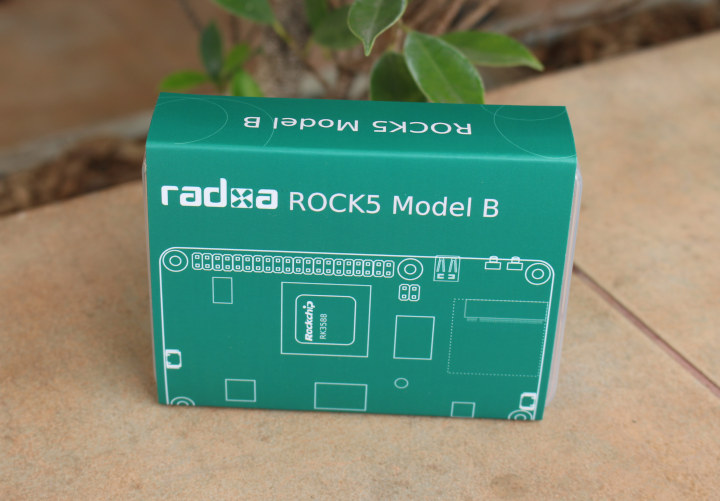
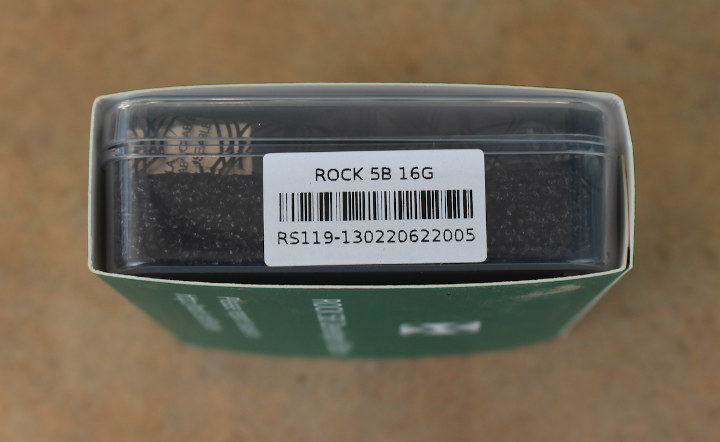
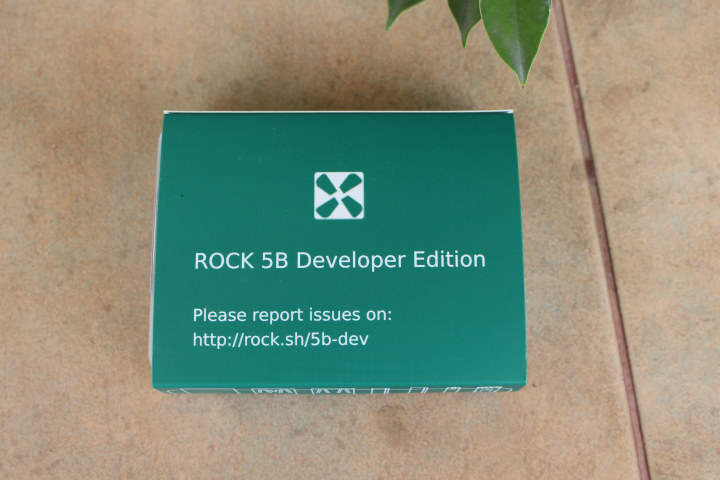
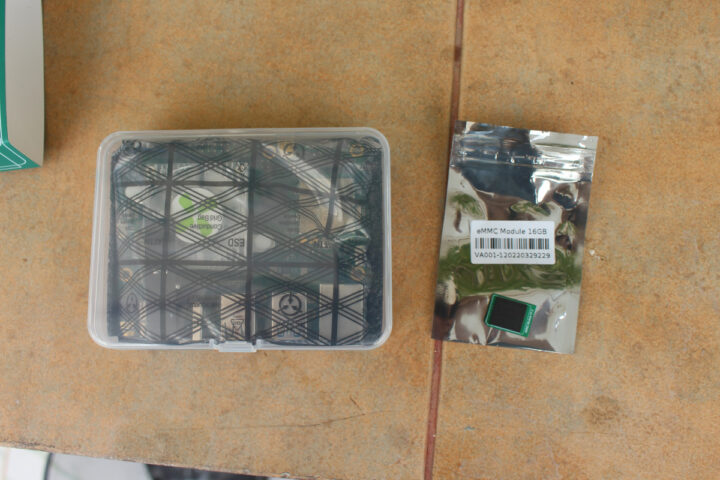
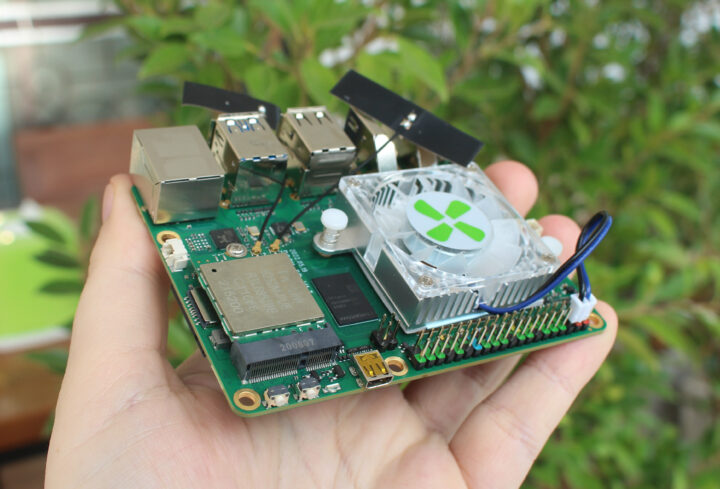
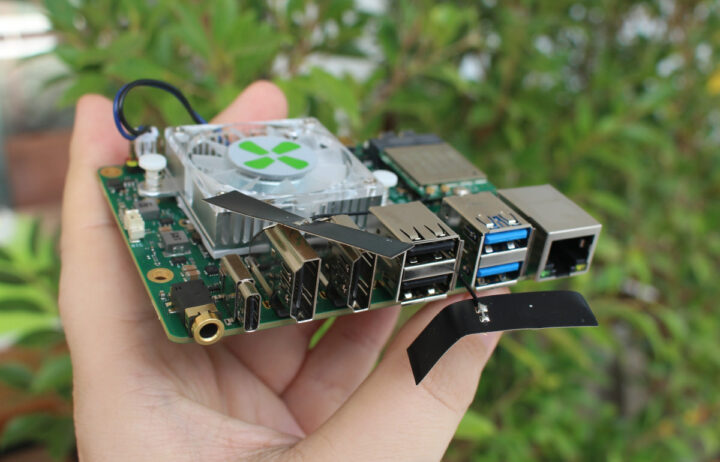
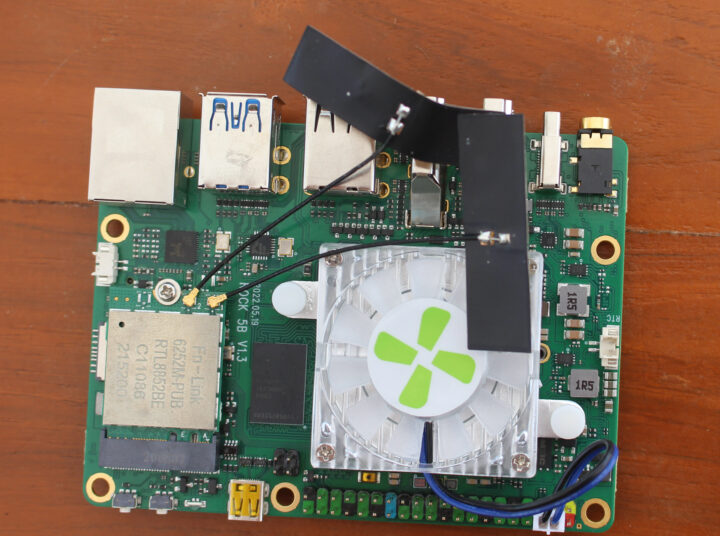
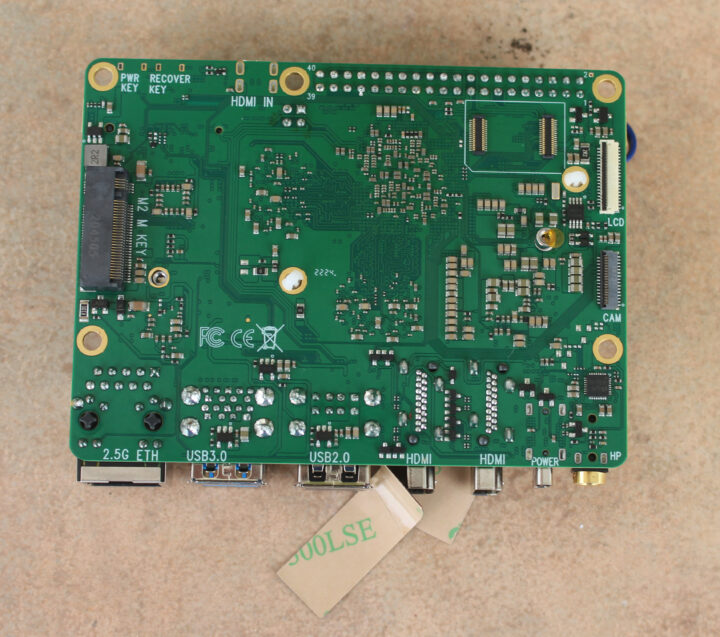
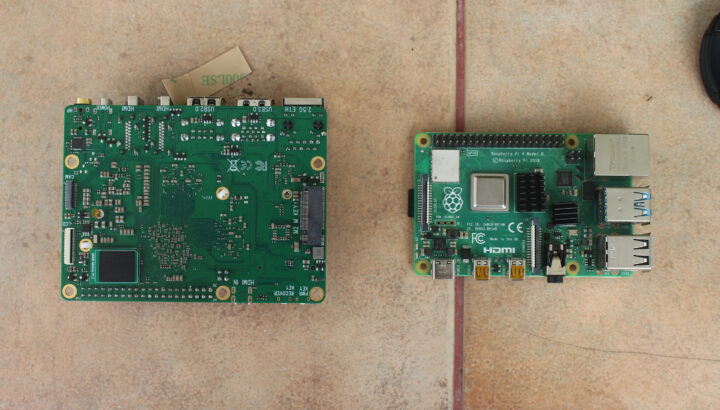
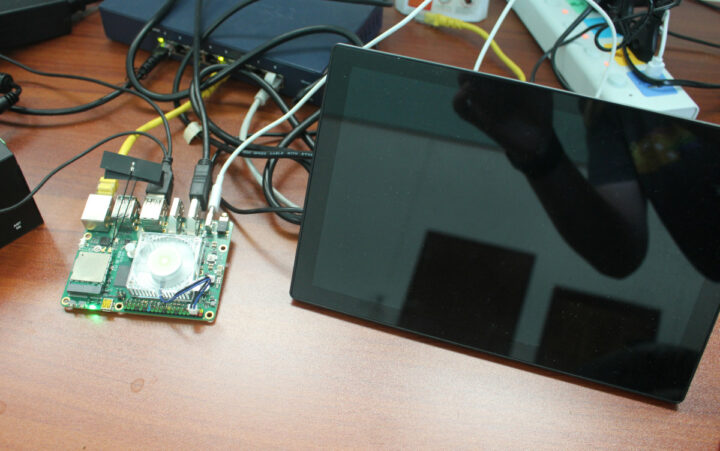
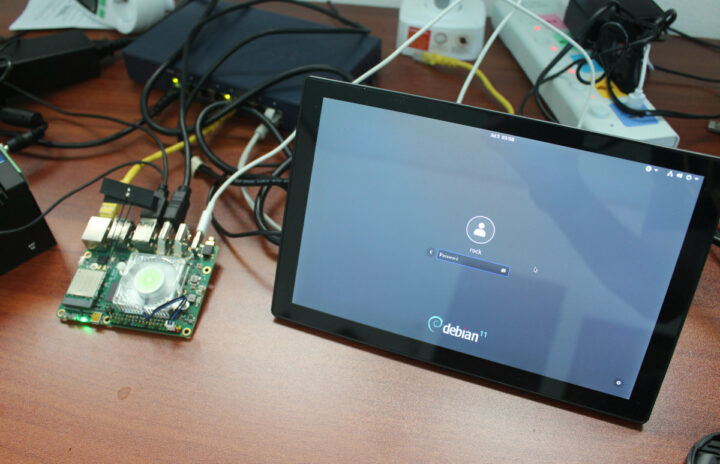



As for the ‘crashes’… you can use the sensors command since the PMU is accessible via I2C and can tell which USB PD or QuickCharge settings have been negotiated between power brick and board.
Here’s the output:
That’s 12V @ 1.5A.
> That’s 12V @ 1.5A.
18W should be enough (with my measurements the board running under full CPU load w/o peripherals doesn’t exceeded 10W consumption) but most probably power source is unstable. If you have a laptop USB-C charger I would give it a try.
The heatsink seems to have contact issues. ‘My’ board reports 11°C less in idle (26°C ambient temp).
I’ve tried three other configurations:
I suppose the problem is somewhere else. I should probably connect a serial debug board.
The USB PD negotiation can be totally controlled in the dts/kernel driver. Quick Charge is not supported since it’s a full function USB C with data and display port.
Tom, could you consider metal case akin to this raspberry pi 4b case? https://images.tokopedia.net/img/cache/900/product-1/2020/8/24/2461990/2461990_8b1f074a-6c09-4fa7-9bc5-ed0ef2fbc025_1008_1008
I’ve tried using RPi4b OC to 1.75GHz with this case, and it’s barely warm, maybe ~44 degree (ambient +- 30 celcius). Good lil’ case.
SBC Bench will stop at random places. Sometimes in tinybench, other times in OpenSSL or 7-zip. This kind of problem is often related to timings. Is there a way I can set up the RAM to run at more conservative timings?
RAM timings usually provoke segfaults all the time, rarely silent hangs like this. Many years ago I used to use a parallel build of glibc to detect errors, and it used to be extremely reliable at this!
In your case I’d rather think about a CPU stability issue. You could try to reduce the allowed frequency for the CPU to 2.208 GHz for example and see if that still happens. Do not underestimate the little cores by the way. On my NEO4 (RK3399) they were often the ones failing first and I had a tendency of forgetting to check them as carefully as the big ones.
Just for the record: I powered ‘my’ board with RPi’s 15W USB-C charger and and benchmarked again without any problems (since consumption remains below 10W)
As for Willy’s suggestion an ‘apt install cpufrequtils’ followed by ‘cpufreq-set -h’ might be the fastest way…
Jean-Luc, can you please give latest sbc-bench version from Github another try? There was a bug switching back to ondemand cpufreq governor. With latest version board should remain at highest cpufreq OPP and as such switching between different clockspeeds (and supply voltages) shouldn’t happen any more.
Maybe this fixes the freezes?
I’m playing with the Mekotronics device (Android) right now, I’ll switch to ROCK 5B again this coming weekend.
This does not fix the freeze.
If I set the frequency of the big cores to 1.01GHz with cpufreq-set:
It only stays that way until the benchmark starts, and then jumps to 2304 MHz:
Got lucky and managed to complete one run:
So your A76 cores are limited to 2280 MHz. Would be interesting if you can do some stress test by running sbc-bench in a loop for some time.
If your board survives this now and you’ve changed nothing else (power bricks, cables), then testing again with the older sbc-bench version resulting in freezes most probably cpufreq driver is the culprit.
I got one successful run out of three. So I’m not sure we can consider this resolved 🙂
Ok, then in case you already tested with Armbian (exactly the same outcome as with Radxa’s Ubuntu since essentially everything the same except extlinux.conf gone) I can provide a more recent BL31 (MD5: fc8737fd1610db1c9a9396efb83413d4)
Only works on Armbian, requires ‘dpkg -i’ and a reboot but then Rock5B should run with BL31 v1.26 instead of v1.25. Maybe this changes something…
Do you mean exactly the same as Radxa’s Debian? Because my eMMC flash module shipped with Debian 11.
No I’m talking about those Armbian images: https://github.com/rpardini/armbian-release/releases
Jammy though but since it’s same kernel and same u-boot and (almost) same settings everything performs the same. Just with the Armbian image you can easily replace the bootloader package and as such the boot BLOBs that got compiled into the above debian package.
> If I set the frequency of the big cores to 1.01GHz with cpufreq-set
This can’t work since sbc-bench is ramping up to the maximum allowed by cpufreq OPPs that got activated. But with the bugfix version cpufreqs stay at the upper level so if your freezes occured due to cpufreq driver switching between different clockspeeds (and supply voltages!) this should be resolved now.
By the way, I’ve just seen the board did not reboot the second time, it just froze.
I’ve previously watched a review of the RK3588 Mekotronics device and that reviewer noted it vastly out performed the Nvidia Shield TV. Only thing Nvidia device has is much better software support. If the price can be kept and if Rockchip support improves, the RK3588 and maybe the S version will raise the performance to $ bar high.
Jean-Luc,
regarding your 2304 MHz, it’s like for me, though for me cluster 1 is 2304 and cluster 2 2352:
For @tkaiser both are at 2400. We found a pvtm value which differs and seems to condition the frequency, though I don’t know what it is, I’m suspecting some inaccurate measurement that might be causing an identification problem. And your values are slightly lower than mine though in the same range and would indicate a relation with that 2304 MHz frequency:
Mine:
Yours:
@tkaiser’s:
Note that the 3 of us are having a different value for cpu0 but apparently we’re using 1800 MHz for the A55 so it might not just be that.
> dmesg|grep cpu.*pvtm
Just added this info to sbc-bench’s data collection 🙂
Most probably this stuff not only explains which cpufreq OPP become active but also the obscure clockspeed behaviour (real clockspeeds almost always differing from cpufreq OPP)
VPU. I need VPU showcase on Linux
I would love to see more about the board’s power consumption in the next part of the review, especially when idling and during workloads like software decoding, maybe video playback in the browser?
10W at 100% CPU is already very comfortable to power the board from a battery.
Also curious about what power inputs it supports, is it usb-c only or are there other options?
Curious if the HDMI input is somewhat usable and stable. Also curious if the hdmi input includes audio. Jean-Luc, I’m looking forward to you hopefully playing with that in the next review. Or perhaps Tom C could answer ths one?
It still alive! Great news.
There are 2 vesions and it seems that you received the first version who as some power supply issues… They forgot a lot of MLCC capacitors around the Rockchip power chip !
> There are 2 vesions and it seems that you received the first version
In fact there are 4 revisions and it looks like Jean-Luc received the same 1.3 HW revision as others… but still curious which RK3588 revision hides below the fansink.
I would like to buy ROCK 5B developer edition preview, please give more information: availabilty, price, where buy it, it can work with raspi camera for video…? waiting for information. Thanks Loui
Hope for your second part to overclock it!
for your hight temperature use another fan under the mobo in parallel of the above
Do think this will have a passive heatsink option. I ask as I am very bias to SBC solutions with passive heatsinks.
As shown here in my tests, I’m totally convinced that this is possible with a large enough heat sink (and the board has quite some surface to make this possible) : https://forum.radxa.com/t/rock-5b-debug-party-invitation/10483/101
Also, being able to repeatedly run “openssl speed -multi” without any heatsink for several minutes without the SoC becoming burning hot is quite encouraging as well.
Willy,
Thanks for the link. Hopefully there will be a passive heatsink option that will fasten like the pic of this article shows for the fan/heatsink used. The types of applications I will want to use with a Rock 5B 16Gb version will be CLI (no DE/No GUI) 24/7/365. Depending on the CPU power a few application uses will involve 100% CPU all cores for 3-7 minutes every 10 minutes to make several passes and complex calculations for each pass of the 20,000,000 records every 10 minutes. No database involved, just number of fields of numerical data for each record of the 20,000,000 records passed multiple times. It is the number of records and calculations elements that will demand the 16GB of RAM as the actual applications processing this data are very small and of course CLI based code.
Interesting, such workloads are not much different from a developer’s build farm which heats for a few minutes, then cools down, then heats again etc.
Any chance this has POE support? That is the one thing I haven’t seen much of in the Pi competitors.
Hi, thanks for the review. Did they say what’s the highest MP that ISP supports for camera?
The Rockchip RK3588 SoC comes with a 48MP ISP according to the datasheet
USB 3.0 host and one USB 3.0 OTG ports, each 5Gbps/s, working independently on this one 2 lane for usb3.0?????
Does the board support booting from NVMe? Did you try that? Or did you just run it off an eMMC?
I just ran Debian from the provided eMMC flash. I haven’t tried booting from the NVMe SSD.
I have a board – and it does support NVMe booting. I have ubuntu running on it now booting up with a cheap NVMe drive.